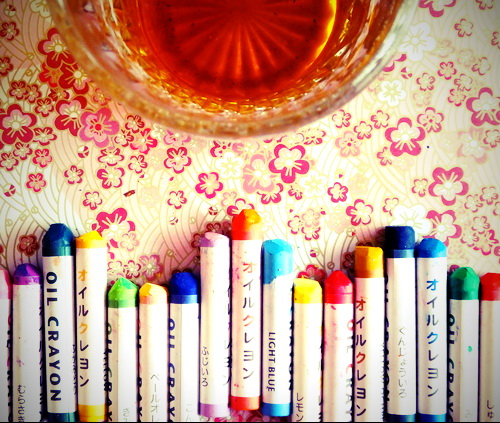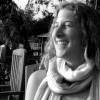
“You can’t use up creativity. The more you use, the more you have.”
~ Maya Angelou
“Curving back within myself, I create again and again.” ~ The Bhagavad Gita
The word “creativity” can be a daunting one.
It conjures images of world-famous artists—visual artists, writers, dancers, among others—bringing breathtaking works into the world, and being validated by certain criteria (by no means objective) for what makes good art.
But in an age when we are becoming increasingly aware of the toll social media and information saturation is having on our brains, and of our need to become more grounded and in sync with the rhythms of nature—our entire sense of well-being depends on this—it’s more important than ever that we really embrace a definition of creativity that makes it available for all of us.
In other words, let’s not forget that for every Mona Lisa, there is a 10-year-old finding a “creative solution” to avoiding punishment by his or her parents, and for every “Moby Dick,” there’s a grandpa captivating a roomful of relatives with an amazing story.
Nobody fully understands what creativity is or where it comes from, which is why there is so much fascinating talk around the subject. I’d like to humbly offer a few opinions here, and would love for them to be taken as inspiration for discussion rather than the final say on the matter.
Considering creativity as the exclusive domain of the fine arts, as we tend to do, can end up an act of self-sabotage, which is why we need to remember how broad creativity really is, so that it stops being such a potentially terrifying word, representing something that is beyond our grasp.
“There is no one definitive creative path. There are many ways to be creative—not only intuitive ways but organized, logical ways, too.” ~ Theresa Bayer
We are all creative. How do we know this? Because we’re alive.
We don’t just know this because evidence goes back at least 17,300 years, when Paleolithic images depicting animals were painted onto cave walls in what is now France as an early instance of the tendency toward art-making.
We are not creative exclusively because we have the urge to manifest images (or audio, or words) representing ourselves, the human experience, and our world—and the workings of our mind and psyche. Rather, we do these things because we are inherently creative. There are so many factors that play into how we end up fostering and nurturing this innate creativity within us.
Being alive is always and already a creative act. We were created by our parents are our ancestors before them. We are borne of a pretty magical and fortuitous act of making, and our lives are the most beautiful possible and foundational form of the creative process.
“The creation of the world did not take place once and for all time, but takes place every day.” ~ Samuel Beckett
This must be why we are drawn to express ourselves and our “creativity.” We want to give back, to express, what was put into our own making. To be in harmony with the universe is to be an ever-evolving creative force within a larger creative entity.
But then we get stuck. We think we have to “be creative.” Not everyone, or all the time. But I think most of us get that restless feeling where we “should be doing more,” or “doing something creative.” Then we bury our deepest impulses under a pile of insecurities and assume creativity is best left for others.
When did creativity become such a problematic and loaded idea for us?
Why do we “play house” or “play doctor” when we’re kids? Why do we pick up our crayons and draw flowers but also completely invent creatures as kids? Right from the start, we are emitting the passions of the world, seen and imagined, right back into it. This is such a beautiful thing.
Kids don’t think about art shows or critiques or external validation. Without consciously knowing it, they understand that to live is to be creative. They play, and what is more creative than playing, and unleashing the imagination without concern about outcome?
We do this as adults too, in our less self-conscious moments. We trail our fingers along the sand, making patterns. We arrange food on our plates in aesthetically pleasing ways and we daydream magnificent creations for our lives.
Certainly, our natural creativity can translate into beautiful art, and even in this realm, we get stuck. We are conditioned to feel that painters can’t also be musicians, that writers cannot be good sculptors, and so on. When we start showing an interest in an art form, we’re encouraged to “stick to one area,” that this is where our natural abilities lie.
Have you seen John Lennon’s sketches? Have you seen John Mellencamp’s paintings? Many musicians, in fact, are known for their visual artwork; here is just one example of cross-over creativity.
In recent years, neuroscientists have discovered what they call “neuroplasticity,” that we have “plastic” brains. At any point in life, we can forge new pathways in our brains, which effectively means that our brains are highly creative in themselves (as mirrors of the universe, they must be!) and allow for us to ever-expand our abilities. The reverse holds true, too. What you don’t use and cultivate, falls off to the wayside.
I know that every time I take a break from painting (often) or journal writing (far less often), I have to work the kinks out of my head and oil the proverbial machinery before I can really get a groove going.
Anything, though, can be a creative act, as an extension of our inherently creative being. I’m not a writer because I’m an artist; rather, I write because this is one of the many possible ways I can honour the world and my relationship to it. It’s a form that I instinctively and naturally feel drawn to, and we can all find our own unique sources of enjoyment by seeking out what moves us.
To me, creative living means doing what you do with passion, authenticity and integrity, with a genuine desire to communicate our own unique presence in the world with others. We can do this by planting tomatoes, tie-dying a shirt, helping those in need, really listening to someone when they speak to us.
The tiniest actions laid bare with passion are already creative, and can very well lead to a motivation on our part to be ever-more creative, until we finally understand what was there all along: creativity is not a goal, but the foundation of our (ideal) mode of being. What flows from this might be a staggering revelation about what we want and have the ability to do.
The way to be what we already are—daringly, gorgeously creative—is to acknowledge that we already have all the tools we need, just by being fully and consciously ourselves.
And now, here it is: 10 ways to get the ball rolling and find yourself already, unexpectedly creative:
1. Listen to a new song twice; once for the melody and once for the lyrics.
2. Have an in-person conversation, and try to scale back on the talking and focus on the listening.
3. Look for shapes in the clouds.
4. Try writing with the hand you don’t normally write with.
5. Write a letter or postcard to someone by hand.
6. Look in the mirror and draw your face on a piece of paper without looking down at what you’re doing.
7. Go out and take take photos of 10 things you’ve never noticed before on your street.
8. Organize your mess of computer files (or, if they’re already super organized, organize them into a new set of categories).
9. Attempt a headstand or handstand so you can see the world from upside down.
10. Close your eyes, and pay attention to every detail of what’s going on in your navel as you take three deep breaths.
Bonus: Ira Glass on how creativity needs to, and can be cultivated:
“Nobody tells this to people who are beginners, I wish someone told me. All of us who do creative work, we get into it because we have good taste. But there is this gap. For the first couple years you make stuff, it’s just not that good. It’s trying to be good, it has potential, but it’s not. But your taste, the thing that got you into the game, is still killer. And your taste is why your work disappoints you. A lot of people never get past this phase, they quit. Most people I know who do interesting, creative work went through years of this. We know our work doesn’t have this special thing that we want it to have. We all go through this. And if you are just starting out or you are still in this phase, you gotta know its normal and the most important thing you can do is do a lot of work. Put yourself on a deadline so that every week you will finish one story. It is only by going through a volume of work that you will close that gap, and your work will be as good as your ambitions. And I took longer to figure out how to do this than anyone I’ve ever met. It’s gonna take awhile. It’s normal to take awhile. You’ve just gotta fight your way through.”
Elizabeth Gilbert’s TED Talk on creativity:
And, a short video on the “plastic” (creative) brain:
Reference: Doidge, Norman (2007). The Brain That Changes Itself: Stories of Personal Triumph from the frontiers of brain science. New York: Viking.
Love elephant and want to go steady?
Sign up for our (curated) daily and weekly newsletters!
Author: Tammy Stone
Editor: Travis May
Photo: Courtesy of author








Read 0 comments and reply